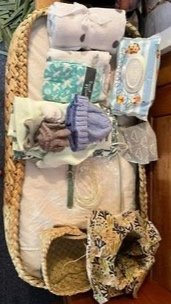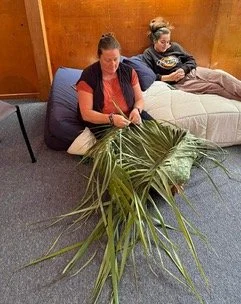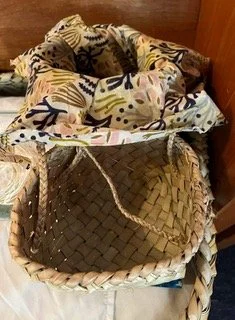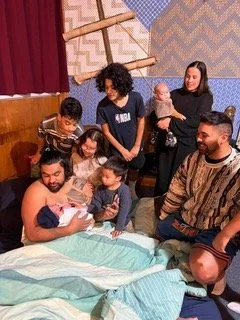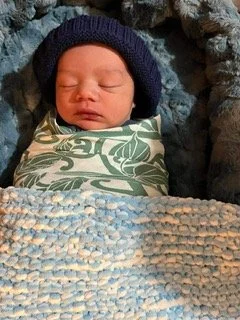When whānau is everything, having your third pēpi in your wharenui called Te Whānau Arohanui Whare Wānanga ki Waitati surrounded by whānau will always be an unforgetable experience for this hākui.
LaLa Lewis is a gorgeous and oh-so-cool, stylie wahine living in Waitati, a little coastal settlement north of Dunedin, Aotearoa. LaLa lives with her tane Jordon, her two tamāhine, Ziggy London aged 11 and Vallee Waipounamu aged 9 years, and their latest taonga, their tama, Waileh Kia tau te Ruariki Rangi Marie Ioritana Fuatavai Lewis.
LaLa comes from a long line of weavers. They have woven both fibre and whānau ora for as long as they themselves have existed. LaLa naturally has followed suit with her diploma in AOD counselling and invaluable experience working, like the generations before her tirelessly for the community.
Lala’s Story
Quintessence of Papatūānuku
I met LaLa during my Masters’s degree whilst exploring the kaupapa of Māori Customary Birthing practices. LaLa and her firstborn Ziggy London, starred in my Master’s film, Iho Between Two Worlds. The intention was to film LaLa through her labour and birth at home and witness her utilising customary birthing practices and tools. However, Ziggy London, her pēpi had other plans and that was to stand up and enter the world feet first. After a very long labour and uncomfortable birth in the hospital, LaLa felt too overwhelmed to include customary birthing practices during this birth experience. The kete of customary birthing tools I gifted her prior to this birth was not able to be used. The labour of her second pēpi, Vallee Waipounamu, was definitely shorter than her first, but still 18 hours of memorable pain and discomfort. LaLa said her emotional state during this birthing journey challenged the smooth labour ride she was hoping for. The kete sat patiently for another nine years.
I caught up with LaLa recently and she greeted me with a beaming smile and news bursting to be told. She proudly stated she had finally used the kete for her third pēpi delivered at the whānau Marae. LaLa said she thought of me during her labour and birth. I would be proud of her use of customary birthing tools she exclaimed. I was, proud of that but more so of LaLa. I quietly knew one day she would use the kete, when she was ready and when everything aligned.
LaLa said throughout this hapūtanga she felt more connected to the taiao. She went on bush walks and swims in the sea. She gave herself time and space to listen intuitively to the needs of her body and mind. Her tane Jordon looked after her superbly, and she described his care as rongoā throughout her pregnancy and birth. “I was ready, calm and relaxed this time, I didn’t have much to worry about, Jordon had the kids and this allowed me to have space.” Her vision was to birth her pēpi in the wharenui under the pou of Tangaroa and next to the tohorā tukutuku panel. LaLa’s midwife was another contributor to fulfilling her ideal birth because according to LaLa, this midwife listened, she was respectful and adversarial to what LaLa and Jordan wanted for this birth.
LaLa described her hapūtanga as, “straight forward” yet she also stated she had some full-on gastric reflux, felt nauseous throughout, and had one scare at 14 weeks when she bleed a large amount. She said that the three of them during this scare, Jordan, herself and pēpi just tuned into each other and waited for the scan results. A ruptured blood vessel and a strong heartbeat from pēpi was the outcome.
The start of labour was heralded by her waters breaking, she informed Jordan, and they headed to the whānau whare down the road and prepared the space. The pool was blown up and filled, mattresses laid out in the whare and the message went out on the kumara vine that LaLa was in labour. Within a short period of time whānau arrived, young and old – present to witness another moko coming into Te Ao Marama. This pēpi was aware of the audience and waited until all were there.
Jordan and the other tane nurtured the birthing process but it was LaLa’s māmā who reached into the water and lifted newly arrived Waileh to the surface, one of her Aunties tied the iho with muka whītau and her other Aunty cut Waileh’s iho. It was a mana wahine process all the way and each of these wāhine had a significant role in LaLa’s life. She wanted them to be part of this sacred and ritualistic process. This was a reclamation for LaLa in so many ways in terms of having the birth that she wanted for her first child, for birthing at home and in the wharenui, and for finding her true strength and confidence in the childbirth process. It was equally healing for all the wāhine surrounding her and Waileh came into this world surrounded by wāhine who were the quintessence of Papatūānuku. Mana wāhine, mana tane, mana whānau, mana whakapapa!


